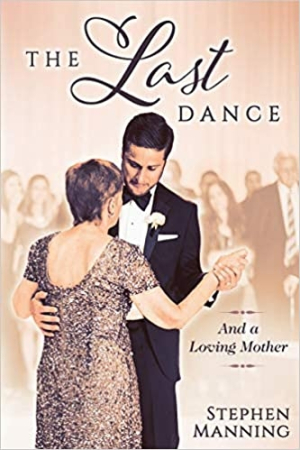It looks like you've stumbled upon a page meant to be read by our code instead of viewed directly. You're probably looking for this page.
The Last Dance
And a Loving Mother
The romantic memoir The Last Dance recalls the happy moments of a long marriage for a family’s next generation.
Stephen Manning’s memoir The Last Dance is filled with loving memories of his wife.
When Manning left his childhood home, his mother told him to “marry the woman you want to be the mother of your children.” The advice had a profound impact on him. He formed an ideal of a loving mother in his mind, and judged the women he met against it. When he met Mary Ann, he recognized her as the woman of his dreams.
At first, Manning thought that Mary Ann—a beautiful lady with a boyfriend—was way out of his league, and that the best he could hope for was a friendship. But then Mary Ann admitted that she had feelings for him, too. When Mary Ann found out that she had a medical issue that could compromise her ability to have babies, Manning was torn, and questioned his desire to marry someone who might not be able have children. Still, he and Mary Ann began a wonderful life together, navigating marriage, their careers, having children, and moving around the country. They faced tough choices, surprises, and heartbreaking losses, all while their love remained strong.
Admiration for Mary Ann is evident in the book’s observant anecdotes, which express strong regard for her opinions. Manning recalls making it clear to his bosses that he had to consult with her before accepting career opportunities. At the same time, he played a limited role in their household responsibilities because of his strong feelings about the benefits of stay-at-home motherhood. Still, he and Mary Ann are remembered to have discussed and agreed upon household decisions; their mutual respect for each other comes through in recalled conversations.
Adoring stories convey Mary Ann’s habit of having bloody Marys with brunch; her funny phrases, called “Mary Ann-isms”; her playful punches, followed by kisses, when her husband was being silly; and her organized, community-based parenting style. The couple’s shared values find her active in church, with their children, and among friendly neighbors. Their life becomes a snapshot of well-to-do American life in the 1980s, complete with company cars and contracts from Ronald Reagan’s Star Wars program, Sears credit cards, cruise ship vacations, and commentary on what travel and communication were like before the rise of the internet and cell phones.
When it is focused on Manning’s love for his family, the book is direct and informative, if low on specifics that might invite outsiders in. The text comes to function as a play-by-play of the couple’s milestones. Its details concerning Manning’s auditing jobs and daily activities are tedious, and some of the couple’s repeating experiences, as with the births of their children and family moves, are covered in repetitive terms. Exclamation points are used in excess, and the book is inconsistent when it comes to its use of italics.
Working toward an emotional resolution, the memoir The Last Dance is romantic in recalling a long marriage; it is designed to convey a family’s history to next generations.
Reviewed by
Delia Stanley
Disclosure: This article is not an endorsement, but a review. The publisher of this book provided free copies of the book and paid a small fee to have their book reviewed by a professional reviewer. Foreword Reviews and Clarion Reviews make no guarantee that the publisher will receive a positive review. Foreword Magazine, Inc. is disclosing this in accordance with the Federal Trade Commission’s 16 CFR, Part 255.
